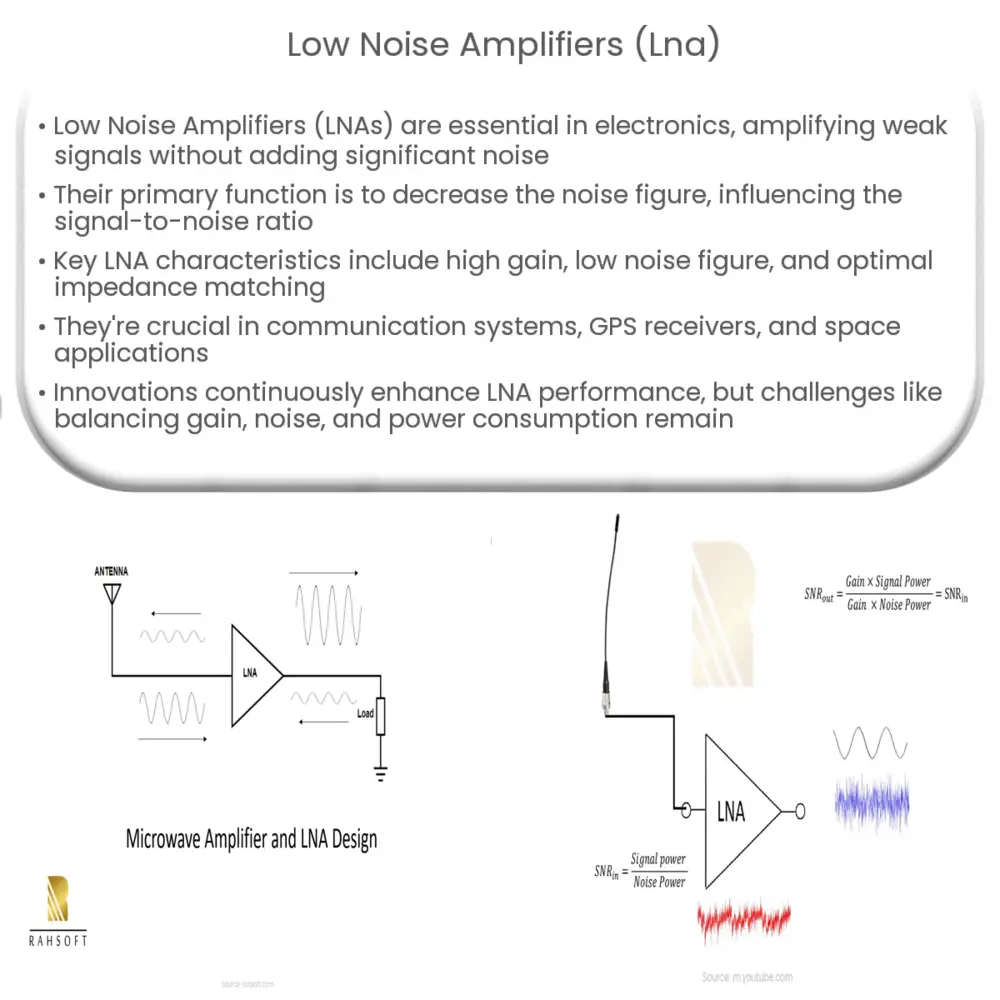Explore the principles, design, applications, and future trends of Low Noise Amplifiers (LNAs) used in wireless communication systems.

Introduction to Low Noise Amplifiers (LNA)
Low Noise Amplifiers (LNAs) are a key component in many electronic systems and communication devices. These critical elements are used extensively to amplify signals, crucial in various applications such as satellite communication, mobile devices, GPS, and more. The unique characteristic of these amplifiers is that they minimize additional noise while amplifying the weak signals.
Principle of Low Noise Amplifiers
The primary function of an LNA is to decrease the noise figure (NF). The NF is a measure of degradation of the signal-to-noise ratio (SNR), caused by components in a signal chain. It’s a significant factor in determining the performance and reliability of a communication system. An ideal LNA would have a NF of one (1st), signifying no degradation of the SNR.
In practical terms, an LNA should possess the following characteristics:
Working of an LNA
The basic operation of an LNA involves the amplification of signals that are very weak in strength – for instance, those received by an antenna. These weak signals can be drowned out by noise if they are not boosted, hence the need for amplification. However, the amplification should be done without significantly increasing the noise level. This is the key function of an LNA.
Components and Design
An LNA circuit primarily consists of a transistor, input and output matching networks, and biasing components. The choice of transistor technology (such as GaAs, Si, or SiGe) impacts the noise figure, gain, and power consumption of the LNA. The design of the input and output matching networks is critical in ensuring the desired gain and stability while achieving a low noise figure.
Applications of LNAs
LNAs find numerous applications in today’s world. A few notable examples are:
Performance Considerations
Performance evaluation of an LNA involves considering various factors:
Future Trends
As the world becomes more connected and the demand for wireless communication grows, the importance and relevance of LNAs increase. Innovations in technology are continuously improving the performance parameters of LNAs. For instance, advances in materials science have led to the development of transistors that provide higher gain and lower noise figures. Moreover, new design techniques are emerging that allow better impedance matching, leading to improved efficiency of LNAs.
Challenges
Despite the significant role of LNAs, certain challenges persist in their use and development. The primary among these is the trade-off between gain, noise figure, and power consumption. Optimizing one parameter often leads to a compromise in the other. Furthermore, achieving a wide operating frequency band with high gain and low noise figure is an ongoing challenge.
Conclusion
In conclusion, Low Noise Amplifiers (LNAs) play an integral role in many electronic systems, significantly contributing to the field of communication. They ensure signal strength is boosted while keeping the noise level at a minimum, providing us with clear, reliable communication paths. With continuous advancements and innovations in the field, the future of LNAs holds promising potential for improving wireless communications and the development of electronic devices. However, designers and engineers still face certain challenges that must be addressed to fully unlock the potential of these critical components.

